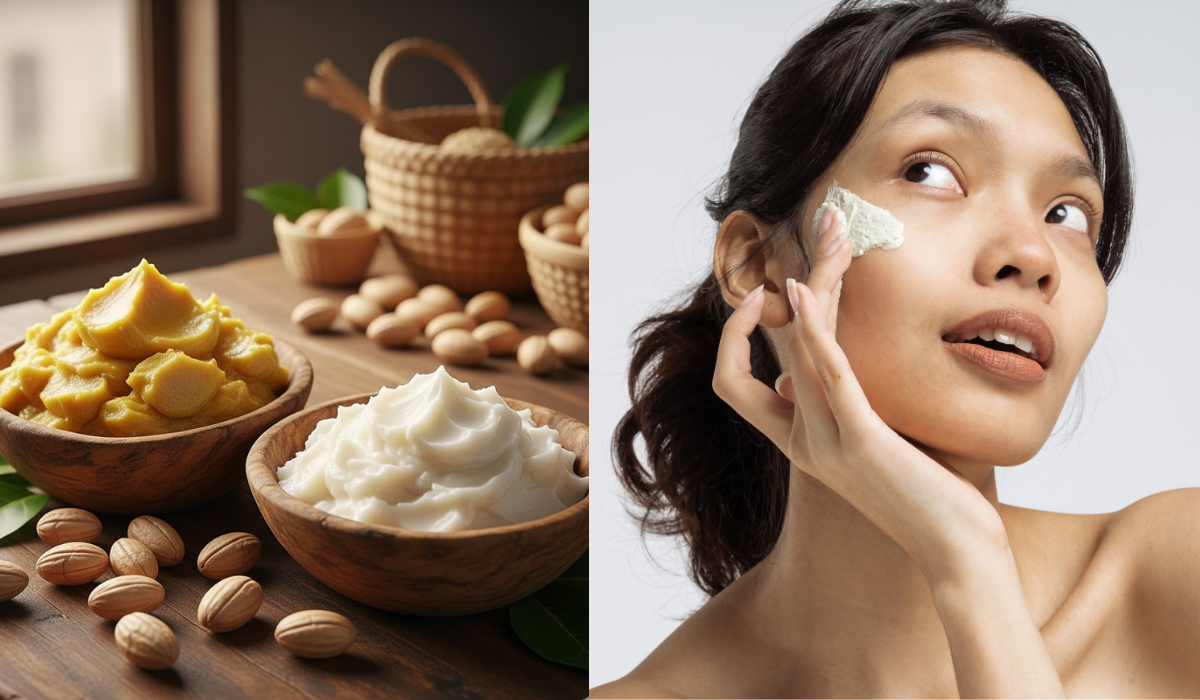Shea butter has long been cherished as a natural remedy for moisturizing, healing, and protecting the skin and hair. Extracted from the nuts of the African shea tree (Vitellaria paradoxa), this rich, creamy substance has been a staple in African skincare traditions for centuries. In modern times, shea butter has become a beloved ingredient worldwide, found in lotions, soaps, conditioners, and even lip balms.
But if you’ve ever gone shopping for shea butter, you’ve probably noticed two types on the market — yellow shea butter and white shea butter. They may look similar, but their color difference raises a common question: what’s the difference between yellow shea butter and white?
In this article, we’ll take a deep dive into how these two variations differ in color, texture, processing, composition, and uses, helping you choose the best type for your personal care needs.
Understanding Shea Butter at Its Core
Before exploring the color differences, it’s important to understand what shea butter really is. Shea butter comes from the nuts of the shea tree, native to West and Central Africa. These nuts are crushed, roasted, ground, and then kneaded to extract a thick, oily paste — shea butter.
This butter is naturally rich in:
- Vitamins A and E (for skin health and elasticity)
- Fatty acids like oleic, stearic, palmitic, and linoleic acids (for deep moisturization)
- Antioxidants (for protection against environmental stressors)
Traditionally, women in Africa prepare shea butter by hand using time-honored methods. The end product can vary depending on several factors, including the region of origin, processing technique, and added natural ingredients — all of which contribute to its color and texture.
The Key Difference: Color and Composition
The most visible distinction between yellow and white shea butter lies in their color. However, the color difference is not just cosmetic it can also indicate differences in processing, additives, and refining.
1. Yellow Shea Butter
Yellow shea butter is usually bright yellow or golden in appearance. It is often unrefined or minimally processed, meaning it retains more of its natural properties. However, the deep yellow tint typically comes from the addition of a natural ingredient called borututu root or African butter tree bark extract.
This root, native to Africa, is sometimes added during traditional processing to give the shea butter its vibrant hue and enhance certain healing properties. The root imparts antioxidant and anti-inflammatory benefits, making yellow shea butter particularly popular for eczema, scars, and dry skin.
Because yellow shea butter is less processed, it maintains its earthy aroma, which can be slightly nutty or smoky. Some people find this natural scent strong, while others appreciate its authenticity.
Key Characteristics of Yellow Shea Butter:
- Color: Deep yellow to golden
- Processing: Usually unrefined or minimally refined
- Texture: Thick, creamy, and slightly grainy
- Aroma: Natural, nutty, and earthy
- Additives: Often mixed with borututu root or similar natural coloring agents
- Shelf life: Slightly shorter than refined white butter (about 1–2 years)
2. White Shea Butter
White shea butter, on the other hand, ranges from off-white to pure white. This color difference often results from refining processes that remove impurities, natural colorants, and the strong earthy aroma.
Refining can be done in several ways — through natural filtration, bleaching, or heating. While refined white shea butter has a smoother texture and more neutral scent, it can lose some of the nutrients and healing compounds present in unrefined yellow butter.
That said, white shea butter is often preferred by cosmetic manufacturers and individuals sensitive to strong smells. It blends easily into lotions, creams, and other formulations without altering their fragrance or color.
Key Characteristics of White Shea Butter:
- Color: Off-white to pure white
- Processing: Refined or bleached to remove impurities
- Texture: Very smooth and uniform
- Aroma: Mild or almost odorless
- Additives: Typically none (refining removes natural pigments)
- Shelf life: Slightly longer (up to 2 years or more)
Processing: How Refinement Changes Shea Butter
The processing method plays the biggest role in determining whether shea butter turns out yellow or white.
Unrefined (Yellow)
Unrefined shea butter is extracted through traditional hand-processing without chemicals. The nuts are roasted, ground, and whipped manually, and then naturally separated from water. This version retains its natural vitamins and minerals, as well as its original yellow tint — sometimes enhanced by plant roots.
Refined (White)
Refined shea butter undergoes additional processing steps such as filtration, deodorizing, and bleaching. This removes the strong smell, reduces color intensity, and yields a lighter texture. However, during this process, some bioactive compounds like antioxidants and vitamins may diminish.
Both types are useful — the best choice depends on what you’re using it for.
Comparing Yellow vs. White Shea Butter: A Quick Overview
| Feature | Yellow Shea Butter | White Shea Butter |
|---|---|---|
| Color | Deep yellow/golden | Off-white to pure white |
| Processing | Unrefined or minimally processed | Refined or bleached |
| Aroma | Strong, nutty, earthy | Mild or odorless |
| Texture | Thick and grainy | Smooth and creamy |
| Nutrient Retention | High | Moderate |
| Best For | Healing, intensive moisturizing | Cosmetic formulations, mild skincare |
| Shelf Life | 1–2 years | Up to 2+ years |
| Additives | May contain borututu root | Usually none |
Benefits of Yellow Shea Butter
Yellow shea butter is prized for its natural richness and therapeutic properties. Because it’s less processed, it maintains higher levels of:
- Vitamins A, E, and F, which promote skin cell regeneration
- Antioxidants, helping reduce inflammation and aging signs
- Essential fatty acids, for restoring moisture balance
Common Uses:
- Healing cracked heels and dry elbows
- Reducing scars, stretch marks, and blemishes
- Treating eczema or psoriasis
- Moisturizing coarse hair and scalp
- Protecting skin from sunburn and harsh weather
Benefits of White Shea Butter
White shea butter offers similar moisturizing benefits but is more suitable for sensitive skin and cosmetic formulations. Its neutral scent and smooth consistency make it easier to mix with other ingredients like essential oils or fragrances.
Common Uses:
- Ingredient in lotions, lip balms, soaps, and creams
- Gentle moisturizer for babies and sensitive skin
- Base butter for DIY cosmetics
- Hair conditioner for softening strands
- Blending agent for fragrance-free skincare products
Which One Should You Choose?
The choice between yellow and white shea butter depends on your personal needs and preferences:
- For natural skincare and healing: Yellow shea butter is ideal if you prefer an organic, nutrient-rich option and don’t mind the natural aroma.
- For cosmetic use or sensitive skin: White shea butter is perfect if you want a smoother, lighter butter that blends seamlessly into your skincare or haircare recipes.
In essence:
- Choose yellow shea butter for its raw power and deep nourishment.
- Choose white shea butter for its refined elegance and gentle touch.
Myths About Yellow and White Shea Butter
There are a few misconceptions worth clearing up:
- Myth: White shea butter is fake.
Fact: Not true. White shea butter can be authentic — it’s just more refined. - Myth: Yellow shea butter is always superior.
Fact: Yellow butter retains more nutrients, but “better” depends on your use case. - Myth: The yellow color means it’s old or spoiled.
Fact: The color comes from the natural borututu root or tree bark used during preparation — not from aging.
How to Store Shea Butter Properly
To preserve both yellow and white shea butter, store them in a cool, dry place away from direct sunlight. High temperatures can cause melting, while moisture can lead to spoilage or mold growth. Using airtight containers extends shelf life and maintains consistency.
Conclusion
So, what’s the difference between yellow shea butter and white?
In short, it comes down to processing, purity, and preference. Yellow shea butter is typically unrefined, nutrient-rich, and earthy, while white shea butter is refined, milder, and more suitable for cosmetic formulations. Both are deeply moisturizing and beneficial for skin and hair health — the choice simply depends on your needs.
Whether you prefer the natural intensity of yellow shea butter or the smooth sophistication of white, both remain among the most versatile and nourishing natural butters available today.
Informational FAQs
Q1: Is yellow shea butter better than white for skin?
Both are excellent, but yellow shea butter is often more nutrient-rich since it’s less processed. However, if you have sensitive skin or prefer no scent, white shea butter is a gentler option.
Q2: Can I use yellow shea butter on my face?
Yes, but use it sparingly. Its thicker texture may clog pores if overused. For facial use, white shea butter or whipped shea blends are lighter alternatives.
Q3: Why does yellow shea butter smell stronger?
The strong scent comes from its natural, unrefined state and the borututu root added during processing. It’s a sign of authenticity, not impurity.
Q4: Can yellow shea butter turn white over time?
Sometimes, yes. Prolonged exposure to air or sunlight can cause oxidation, lightening its color slightly. However, this doesn’t mean it has gone bad.
Q5: Which type of shea butter lasts longer?
White (refined) shea butter typically lasts a few months longer because it has fewer organic compounds that oxidize over time.

